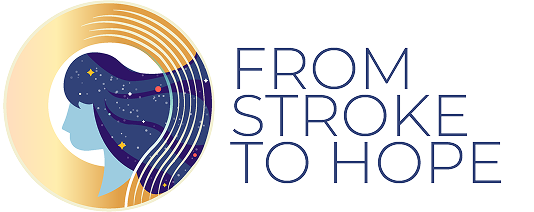Fatigue is one of the most common and frustrating symptoms stroke survivors experience. Unlike regular tiredness, post-stroke fatigue can feel overwhelming, persistent, and unpredictable, making even simple daily tasks seem exhausting.
Because stroke recovery requires physical, mental, and emotional effort, it’s important to recognize the signs of fatigue, find ways to conserve energy, and adopt strategies that help restore stamina.
In this blog, we’ll cover:
✔ Why fatigue is common after a stroke
✔ The difference between regular tiredness and post-stroke fatigue
✔ Effective strategies to manage and reduce fatigue
✔ How to balance rest and activity for better energy levels
Why Fatigue is Common After a Stroke
Fatigue after a stroke isn’t just about feeling sleepy—it’s a deep exhaustion that affects the body, brain, and emotions. Many stroke survivors struggle with:
✔ Physical exhaustion – Tasks like walking, dressing, or cooking take more effort.
✔ Mental fatigue – Thinking, problem-solving, and concentration require extra energy.
✔ Emotional tiredness – Coping with changes, frustration, or stress can drain energy.
The Difference Between Fatigue & Regular Tiredness
Unlike regular tiredness, stroke-related fatigue:
✔ Can occur even after a full night’s sleep
✔ Is not relieved by rest alone
✔ Worsens with mental or physical activity
✔ Can appear suddenly and last for hours or days
🔹 Tip: Keeping a fatigue journal to track when and why exhaustion happens can help identify patterns and triggers.
Effective Strategies to Manage & Reduce Fatigue
1. Prioritize Rest & Sleep
✔ Aim for consistent sleep by going to bed and waking up at the same time daily.
✔ Take short, scheduled naps to recharge without disrupting nighttime sleep.
✔ Create a calming bedtime routine—limit screen time, caffeine, and stress before sleep.
🔹 Tip: If falling asleep is difficult, try relaxation techniques like deep breathing, guided meditation, or soft music.
2. Pace Yourself & Conserve Energy
✔ Break large tasks into smaller steps and rest between them.
✔ Use the “4 P’s Strategy”: Plan, Prioritize, Pace, and Position to manage tasks efficiently.
✔ Schedule more demanding activities when energy levels are highest.
🔹 Tip: If showering is exhausting, try sitting on a shower chair and using a handheld showerhead to conserve energy.
3. Exercise to Build Stamina
✔ Gentle exercises like walking, stretching, or chair yoga help fight fatigue.
✔ Strength training can improve endurance and make daily tasks easier.
✔ Consult a physical therapist to find safe exercises tailored to your abilities.
🔹 Tip: Exercise should be energizing, not exhausting—start slow and listen to your body.
4. Eat Nutritious Foods to Support Energy Levels
✔ Choose protein-rich meals and whole foods to maintain steady energy.
✔ Avoid sugary foods that cause energy crashes.
✔ Stay hydrated—dehydration can worsen fatigue.
🔹 Tip: Keep healthy snacks like nuts, yogurt, or fruit nearby for quick energy boosts.
5. Manage Stress & Mental Fatigue
✔ Stress drains energy—prayer, mindfulness, or deep breathing can help.
✔ Limit overwhelming situations or lengthy conversations if they cause exhaustion.
✔ Use adaptive tools like smart assistants (Alexa, Google) to manage reminders and reduce mental strain.
🔹 Tip: Set realistic goals each day and celebrate small achievements.
Balancing Rest & Activity: Finding the Right Routine
1. Listen to Your Body
✔ Rest when needed, but avoid too much inactivity.
✔ Recognize early signs of exhaustion and take breaks before fatigue worsens.
2. Establish a Daily Routine
✔ Keeping a consistent schedule can prevent energy crashes.
✔ Include a mix of rest, movement, and social time to stay engaged.
3. Ask for Help When Needed
✔ It’s okay to delegate tasks to caregivers, family, or friends.
✔ Use assistive devices to reduce strain (grab bars, dressing aids, mobility aids).
Final Thoughts: Managing Fatigue & Improving Daily Life
Fatigue after a stroke is real and challenging, but it can be managed. By making small adjustments, stroke survivors can conserve energy, improve stamina, and regain independence.
✔ Prioritize rest and listen to your body’s signals.
✔ Use smart pacing strategies to balance activity and breaks.
✔ Exercise gently to rebuild strength and endurance.
✔ Stay mentally and emotionally engaged while managing stress.
💙 Every stroke recovery journey is unique, but with patience and the right techniques, energy levels can improve over time.
👉 Have you experienced post-stroke fatigue? What strategies have helped you manage it? Share your experience in the comments!

